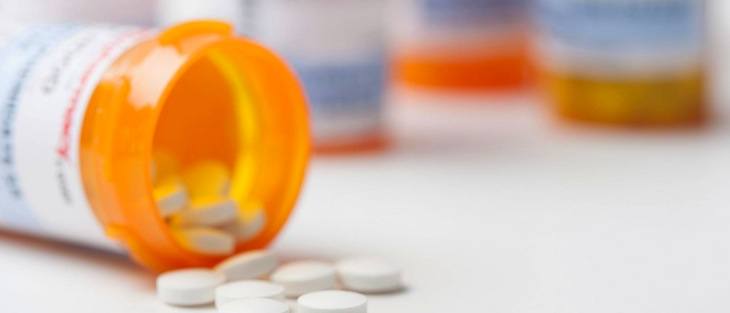More expensive branded drugs push up overall healthcare costs 10% annually
by June 15, 2017 2:56 pm 459 views

The rising costs of name brand drugs protected by patents are driving double-digit growth in pharmaceutical spending annually, according to the recent Health of America report from Blue Cross and Blue Shield.
The report analyzed seven years of drug utilization, price changes and overall spending to find prescription drug expenditures rose 10% annually for its insured consumers. Since 2010 the overall spending for prescriptions is up 73%, according to the report.
“This upward trend is due to a small fraction of emerging, patented drugs with rapid uptake and large year-over-year price increases that are more than offsetting the continued growth in utilization of lower-cost generic drugs,” said Maureen Sullivan, chief strategy and innovation officer for BCBS. “Current trends suggest that this rapid rise in drug trend costs is likely to continue in future years.”
The higher costs are being incurred by consumers and payers. While consumer out-of-pocket costs have risen just 3% for prescription drugs in total, they have risen 18% annually for patented drugs, the report stated.
The report also looked at the percentage share of brand versus generic prescriptions and found more consumers are using generic as the share of all prescriptions has grown from 66% in 2010 to nearly 82% in 2016. While generic usage is up, the share of spending for generic drugs declined to 22% of the total expenditures last year.
Brand usage of drugs declined from 34% of all prescriptions in 2010 to just 18% last year. However spending related to that share of branded drugs rose to 78% last year, up from 77% in 2010. While generic drugs could reach as a high as a 90% usage rate, that won’t offset the cost of rising brand drugs in the future, the report stated.
Analyzing the average rates of usage and spending the report indicates generic usage rose by 9% while overall drugs prices remained flat. Brand usage declined 6% but prices rose 17%, which resulted in 10% more annual spending on average.
The report also found brand drugs with no generic alternative are pushing up overall costs. Where a generic alternative was used the cost was down 12% overall and cumulative spending decreased 47% between 2010 and 2016. Single-source patented drugs with no generic alternative saw a 7% increase in usage resulting in a 285% jump in cumulative spending since 2010.
A majority of drugs in the single-source patented market had double-digit price increases from 2010 to 2016, ranging from 8% annually for patented asthma drugs to 30% for dermatological drugs. Patented antiviral drugs used to treat Hepatitis C and HIV cost 19% more in 2016 than in 2010. Cancer drugs have risen 17% in costs and high cholesterol therapy drug costs are up 18%, while diabetes drug costs increased 14% since 2010.
The top 25 patent-protected drugs make up more than half of the drug spending in the single-source market. Nearly half of these drugs (12 of 25,) are considered “specialty drugs,” the report stated. It is estimated that 17 of these drugs will have a long road to generic competition, and price relief is far from certain, Sullivan said.
Ten of the drugs still have more than five years remaining on their patent life-span. Four of them: Humira, Enbrel, Rebif, and Stelara are biologicals and can be complicated to replicate because of their complexities. There are also four speciality drugs which are insulins – Lantus, Novolog, Levemir and Humalog – all difficult to replace with generics due to clinical and patent complexity, the report stated.
Sullivan said as a result, low-cost generic alternatives to the majority of the drugs cannot be expected soon.
“The data highlighted by this report is reflective of what we’re seeing – aggressive pricing strategies and new product launches, particularly on specialty drugs, are a big driver of the increases and these are real dollars affecting payers and members,” said Steve Johnson, assistant vice president of health outcomes for Prime Therapeutics.
The report also highlighted several patent-protected drugs with the highest price increases, higher utilization rates and their overall impact on cumulative spending since 2010. Spending on the drug Gilenya (neurological agent) increased 30,257% over a seven-year period. This drug’s utilization rate jumped 140% annually, with the price rising 8% each year. Annual spending for this drug rose 159% annually. Experts believe there will be a generic for Gilenya in the next five years.
Spending on Stelara jumped 2,074% since 2016 as this dermatological drug saw a 53% increase in annual usage with the price rising 9% each year for annual spending growth of 67%. A generic alternative is expected to be marketed between six and nine years from now.
The third highest drug for cumulative spending growth is the anti diabetic drug Victoza, which has experienced a 39% increase in annual usage and 12% annual price jumps for 56% more in annual spending or 1,325% more over the seven-year period. A generic alternative isn’t likely for Victoza until 2023 at the earliest and more likely 2025.
